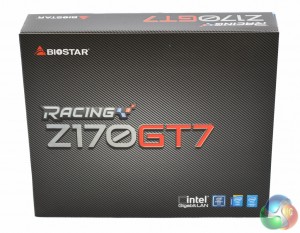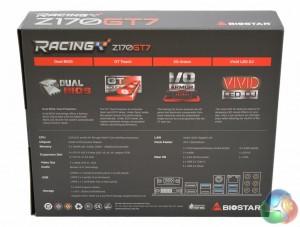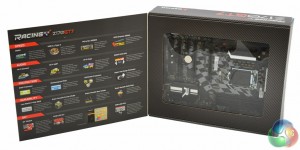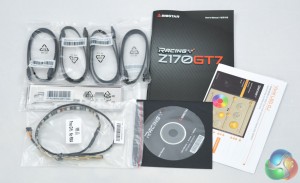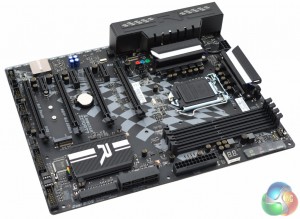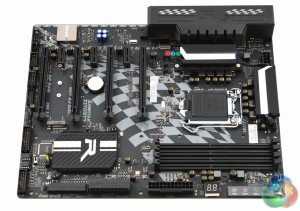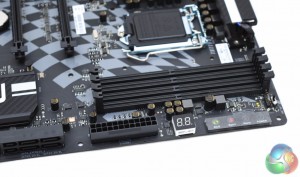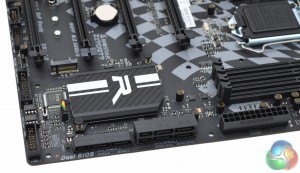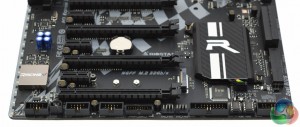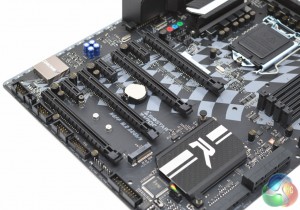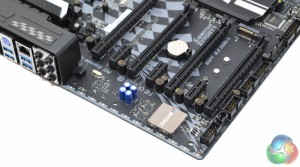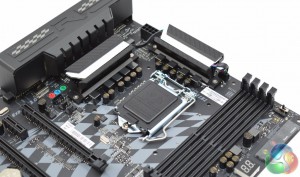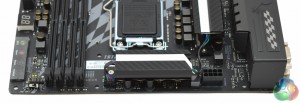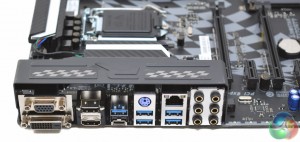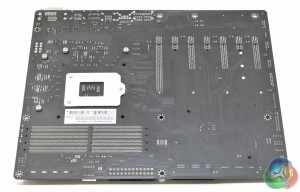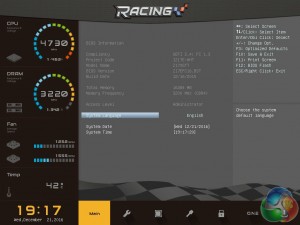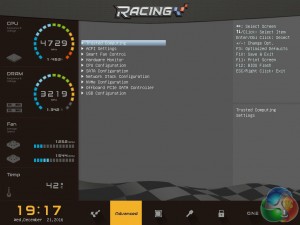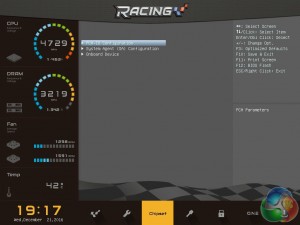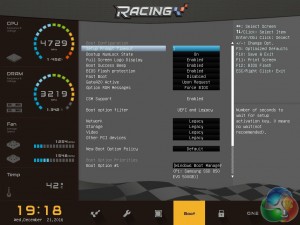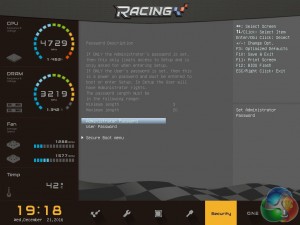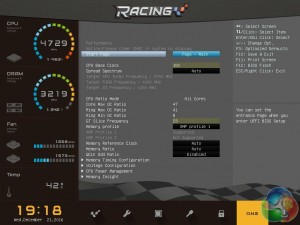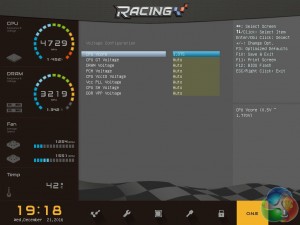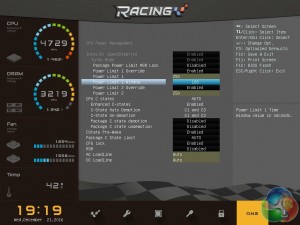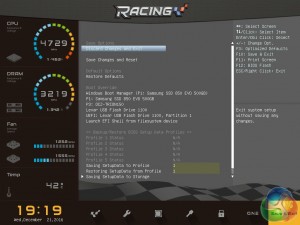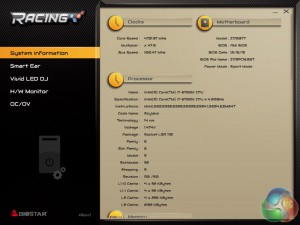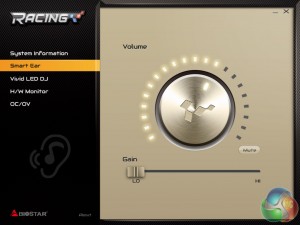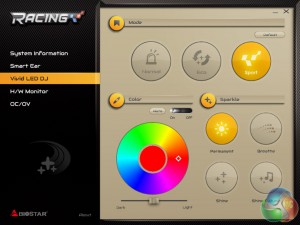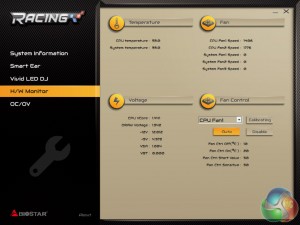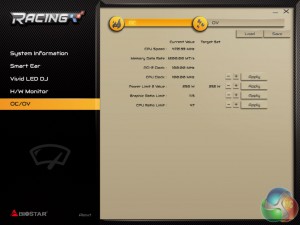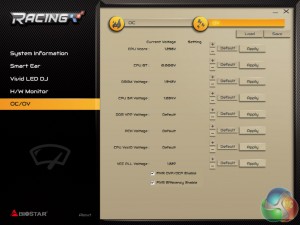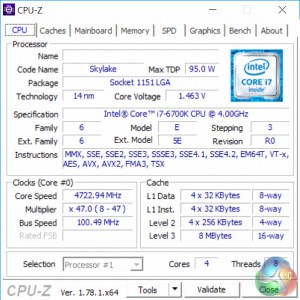
Biostar isn't the first brand that comes to mind for a mid-range gaming motherboard as the big four, ASRock, ASUS, Gigabyte and MSI, dominate this segment. However, with the Racing Z170 GT7 motherboard Biostar is throwing its hat into the ring.
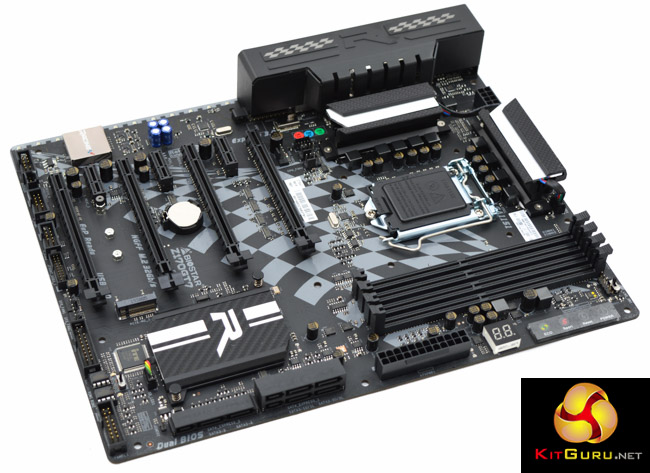
Biostar's Racing Z170 GT7 isn't just another mid-range gaming motherboard with a predictable array of features and onboard hardware. Biostar has differentiated itself in a fairly unique way: an onboard RGB lighting strip, RGB lighting built into the heatsinks and support for LED strips – a full complement of RGB-enabling features. For a motherboard that retails for around $165/£150 this alone is enough to catch the attention of prospective Z170 buyers.
The Racing Z170 GT7 doesn't skimp on connectivity either with the usual interfaces consumers have come to expect from Z170 – M.2 NVMe, USB 3.1 Type C and SATA Express as well as USB 3.0, Gigabit LAN and SATA III 6 Gbps. PCIe lanes are arranged to support 2-Way SLI or 3-Way CrossFireX with dual-slot spacing. Two of the 16X lanes run at 4X and are provided through the chipset (South Bridge), not by the CPU, so 3-Way and 4-Way SLI is not an option, neither is 4-Way CrossFireX.
Biostar's Racing branding is evident in the products design with a black and white chequered racing flag printed onto the PCB and rear I/O cover as well as an R emblem over the chipset heatsink and similar branding on the audio codec's shielding. Despite Biostar's best efforts styling still appears visibly “low-cost”, lacking some of the design and styling finesse of motherboards from the more reputable vendors.
| Biostar Racing Z170 GT7 | |
| CPU Socket | LGA 1151, 6+2 phase VRM |
| Chipset | Z170 Express |
| Memory | DDR4, 4 DIMMs, up to 64GB and 3200MHz+ with OC |
| Onboard Graphics | Intel HD Graphics (supported CPUs) |
| Discrete Graphics | Up to 2-Way SLI, 3-Way CrossFireX, Quad-SLI or Quad-CrossFireX |
| Expansion Slots | 2 x PCIe 3.0 16X (16X/0X, 8X/8X) 2 x PCIe 3.0 16X (4X/4X) 3 x PCIe 3.0 X1* *Shared bandwidth with a PCIe 16X 4X electrical slot |
| Storage | 6 x SATA III 6Gbps 3 x SATA Express 1 x M.2 32Gbps (PCIe or SATA) |
| USB | 7 x USB 3.0 via Intel Z170 (2 Front, 5 Rear) 4 x USB 2.0 via Intel Z170 (4 Front) 1 x USB 3.1 Type-C via ASMedia (1 Rear) |
| Networking | 1 x Intel I219V Gigabit Ethernet |
| Audio | Realtek ALC898 8 Channel Audio |
| Fan Headers | 2 CPU, 3 SYS_FAN, all support 3/4 pin fans |
| Rear I/O | 1 x PS/2 1 x USB 3.1 Type-C Port 5 x USB 3.0 Port 2 x HDMI Connector 1 x DVI-D Connector 1 x VGA Port 6 x Audio Connector |
| UEFI | UEFI dual-BIOS with switch |
Biostar's packaging for the Z170 GT7 shows attention to detail with a well-presented windowed box that provides a pleasant and concise summary of the product's features.
Accessories are basic with four SATA cables, an I/O shield, some documentation and the driver/utility DVD. Buyers in most regions will also get a complementary RGB strip to use with the board's 5050 RGB header: a nice touch that we are surprised more motherboard vendors aren't doing.
Biostar's Racing Z170 GT7 is no show-stopper in terms of its looks but it still fits the bill for a gaming motherboard with its quirky racing theme.
The black, white and grey colour scheme is neutral which helps this motherboard be versatile for a number of different colour schemes. This is especially true when you take into consideration the extensive RGB lighting options available with it.
One of the more unique features of the Biostar Racing Z170 GT7 is the inclusion of touch buttons, which Biostar calls “GT TOUCH”. There are four of them – power, reset, sport and eco, with the latter two being power & performance profiles similar to, for example, the ASUS EPU and TPU profiles and switches. Biostar also provides a debug code reader and LN2 mode switch in this area of the motherboard.
Down near the chipset heatsink, which has a “carbon fibre style” wrap, you'll find all six SATA ports are incorporated into SATA Express ports.
The base of the motherboard hosts the other connectivity – some system fan headers, USB 2.0 and 3.0 headers, two BIOS chips and the BIOS selector switch.
PCIe lanes are plentiful but cannot all be populated at the same time as there are bandwidth sharing caveats. In total there are four physical 16X slots and three 1X slots and maximum possible bandwidth per slot is 16X, 1X, 4X, 1X, 8X, 1X, 4X in top to bottom order (CPU socket to edge of motherboard).
The bandwidth caveats are that are that when both PCIe X16 (4X electrical) slots are populated two of the PCIe 1X slots will be deactivated.
The audio hardware, which includes two sense amplifiers and electrolytic audio capacitors, is hosted on an isolated PCB and the Realtek ALC898 codec sits beneath a shield to reduce electronic interference.
The motherboard uses a 6+2+1 phase VRM for the CPU socket, iGPU and DRAM, respectively, paired to Ferrite chokes and solid caps.
The CPU draws power through a single 8pin EPS connection while the CPU fan headers are actually below the CPU socket near the first PCIe lane, rather than near the CPU power. The 5050 RGB header is actually located next to the CPU fan headers mid-board, rather than with the USB headers at the lower end of the motherboard which could make cable management troublesome.
The rear I/O area has a metal cover decorated with the Biostar Racing-themed chequered flags. The rear I/O has the following connections:
- 1 x PS/2
- 1 x USB 3.1 Type-C Port
- 5 x USB 3.0 Port
- 2 x HDMI Connector
- 1 x DVI-D Connector
- 1 x VGA Port
- 6 x Audio Connector
Underneath the motherboard is a clearer view at the electrical wiring of the PCIe lanes. It's also possible to see that only the CPU heatsinks are screwed into place, users looking to remove or alter the chipset heatsink will have to tread carefully with the pushpin system.
Biostar's UEFI isn't as full-featured or well presented as the UEFI from many of its competitors, nonetheless it is still functional and easy to navigate.
Unfortunately our testing didn't get off to the best start – we had to use the initial launch BIOS, Z17EFC16, for testing since the newer UEFI versions returned error code 55 when enabling the XMP profile for our benchmark memory kit.
In addition we had issues with booting: the latest UEFI detected the boot disk but wouldn't boot beyond the POST. Using the dual BIOS switch to toggle to the launch BIOS and we were able to boot with the same memory kit on XMP and with the same boot configuration without any issues.
The default screen upon entering the UEFI is the main tab which hosts basic information about the motherboard and its settings. The monitoring pane on the left hand side is present throughout all tabs of the UEFI and delivers CPU and DRAM frequency and voltage information, the CPU temperature and CPU Fan RPM's.
Advanced (the spanner symbol) and chipset (the PCH symbol) host most of the system controller settings including options pertaining to NVMe, USB and other onboard devices.
The “Smart Fan Control” is located within the advanced section and users should note that by default smart fan control is turned off. We'd recommend turning this on right away and tuning the fans since the default fan behaviour is overly-zealous and as a result, noisy.
Unfortunately even the “Quiet” fan profile is too aggressive and as such setting a manual fan profile makes more sense to ensure you get something that suits your needs. The default fan hysteresis (the time delay between the temperature changing and the corresponding change in fan speed) is way too short and not adjustable, which means the fan speed is constantly ramping up and down with short-term fluctuations of CPU temperature. Biostar's fan controls need work and are well off the standard we've become used to from the “big four”.
The boot tab contain all settings relating to the POST and booting procedure, such as boot order, while the security tab is primarily for enabling or disabling secure boot and setting an administrator password.
The “O.N.E” section is the overclocking and performance tuning component of the Biostar UEFI. Options are more simplified compared to what you might expect from an ASUS ROG or MSI Gaming motherboard of equivalent stature.
Within O.N.E you can alter CPU and DRAM frequencies, voltages and power behaviour.
Biostar's UEFI seems to implement overly zealous power-based throttling so you will likely need to adjust the Power Limit 1 and Power Limit 2 wattage and duration overrides. This should ensure that when your system is overclocked it doesn't throttle down too often when the 95W TDP is exceeded, which is something ours did frequently on the Auto settings.
Save & Exit contains mostly what you might expect, though there are some extra options which are useful such as the ability to save and load BIOS profiles and enact a boot device override. We would have expected to see this last option in the boot tab, since it is a boot setting.
Motherboard software is hit and miss at the best of times so Biostar's strategy of focusing on only one piece of software for the Racing Z170 GT7 is astute. The “Racing GT” software is simple but useful for getting the most out of the motherboards features.
The System Information tab displays the CPU frequency, CPU details and motherboard specifics.
Smart Bar provides a system volume control and a gain slider for the microphone port is handy. However, both these settings are accessible through the default Realtek control panel software that comes with the audio driver.
The heart of the software, and the reason most users will install it, is for the adjustments to the RGB LEDs. Both the heatsink LEDs and the LED strip near the audio hardware can be adjusted for colour and lighting pattern. Independent adjustment is not possible, however, so you will have to deal with the synchronisation of all the LED sections at the same time (including if you add an optional RGB strip).
The number of lighting patterns is limited and customisation options are pale in comparison to something like ASUS AURA, however, it still “does the job”.
H/W monitor provides a number of temperature, fan and voltage readouts as well as the ability to toggle fan control. Biostar misses a trick though by not offering full fan controls within the operating system like other motherboard vendors do.
The OC/OV tabs provide most power limit, voltage and overclocking options but not all options are present within the software, as you may expect. The UEFI will have to be returned to for the more advanced and obscure options.
Intel’s Skylake processors are just the latest Intel CPU architecture to see many of the critical system operations handled by the processor. As such, benchmarking a motherboard becomes more of a test to certify that the part operates correctly and meets the anticipated performance levels.
Z170 Motherboard Test System:
- Processor: Intel Core i7-6700K (4.2GHz all-core turbo).
- Memory: 16GB (4x4GB) G.Skill Ripjaws V 3200MHz 16-16-16-36 DDR4 @ 1.35V.
- Graphics Card: Nvidia GTX 980 Ti (Reference).
- System Drive: Samsung 850 EVO 500GB
- Storage Test Drive: OCZ Trion 150 480GB (with a USB 3.0 to SATA adapter for USB 3.0 testing.)
- CPU Cooler: Antec Kuhler H20 1200
- Power Supply: Seasonic Platinum 760W.
- Operating System: Windows 10 Pro 64-bit.
Comparison Z170 Motherboards:
Software:
- Biostar UEFI Z17EFC16 (Release Date 16/12/2015)
- Nvidia GeForce 364.72 WHQL Driver
Tests:
- Cinebench R15 – all core CPU test and CPU power consumption figures.
- Handbrake – converting a short 720p movie file into a smartphone suitable format using the Android preset.
- SiSoft Sandra – processor arithmetic and memory bandwidth test sequences.
- AIDA 64 Engineer – memory and cache test.
- 3DMark – Firestrike (1080p) test.
- Ashes of the Singularity – built-in benchmark tool @ 1080p using the Crazy preset.
- Unigine Valley – built-in benchmark using the Extreme HD preset.
- Rightmark Audio Analyser – record and playback test using a line-in to line-out loopback on a high quality gold-plated 3.5mm cable.
- ATTO – default disk benchmark for SATA and USB testing.
Cinebench R15
Cinebench is an application which renders a photorealistic 3D scene to benchmark a computer's rendering performance, on one CPU core, all CPU cores or using the GPU. We run the test using the all core CPU mode.
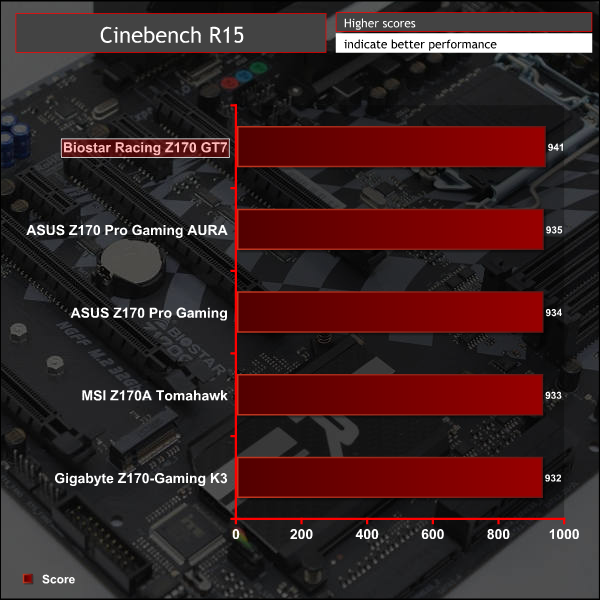
Handbrake
Handbrake is a free and open-source video transcoding tool that can be used to convert video files between different codecs, formats and resolutions. We use Handbrake to convert a short 720p into the Android preset built into the application.
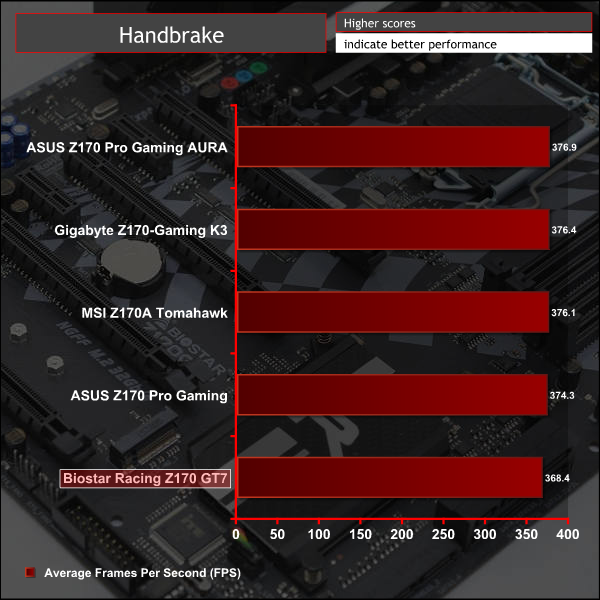
SiSoft Sandra
SiSoft Sandra 2016 is a multi-function utility program that supports remote analysis, benchmarking and diagnostic features for PCs, servers, mobile devices and networks. We run the application's processor arithmetic test to gauge the CPU performance on each tested motherboard.
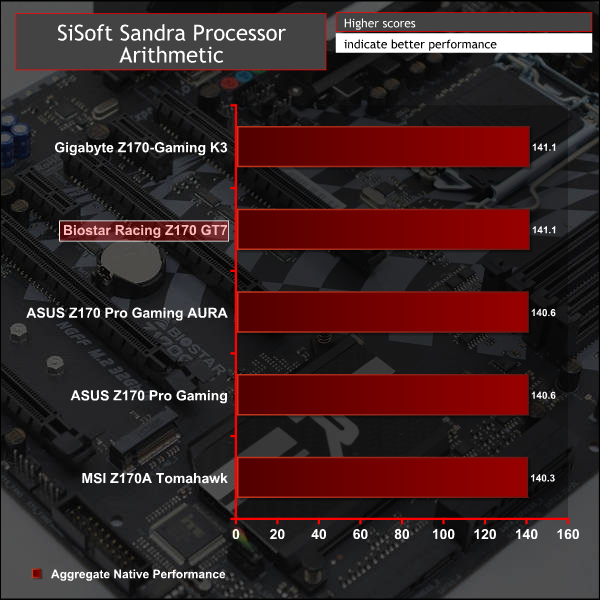
CPU performance was largely what we expected given the fact the CPU is consistent across all motherboards on test. However, on Handbrake the Biostar motherboard seemed to throttle the i7 6700K periodically as a result of the default Power Limit 1 and Power Limit 2 parameters.
This happens because Handbrake is a longer benchmark test, around 6 minutes, and due to the aggressive Auto voltage for the 4.2GHz frequency (1.3~1.4 volts) the CPU regularly exceeds the normal operating TDP range set by Biostar. This accounts for why the Biostar motherboard scores lower, we didn't see such throttling on any other motherboards suggesting their regulation of behaviour outside the default thermal envelope is more relaxed and performance focused.
AIDA64 Engineer
AIDA64 Engineer is a multi-featured software suite for diagnostics, stress testing, benchmarking, software auditing and various other measurement parameters. We use AIDA64 Engineer to benchmark memory throughput and latency.
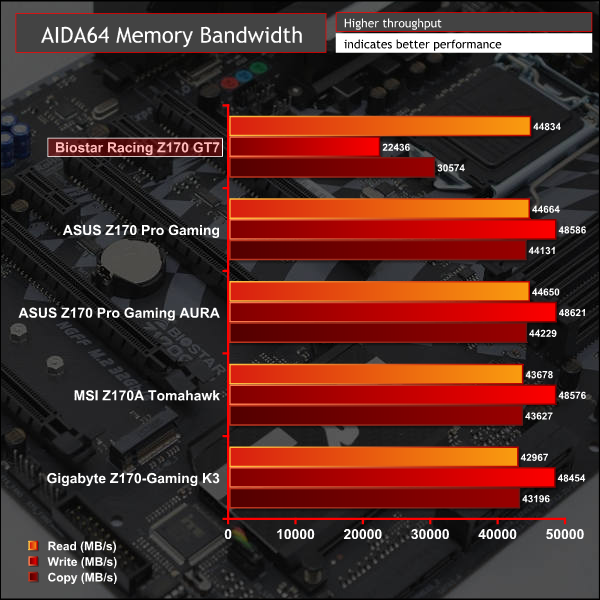
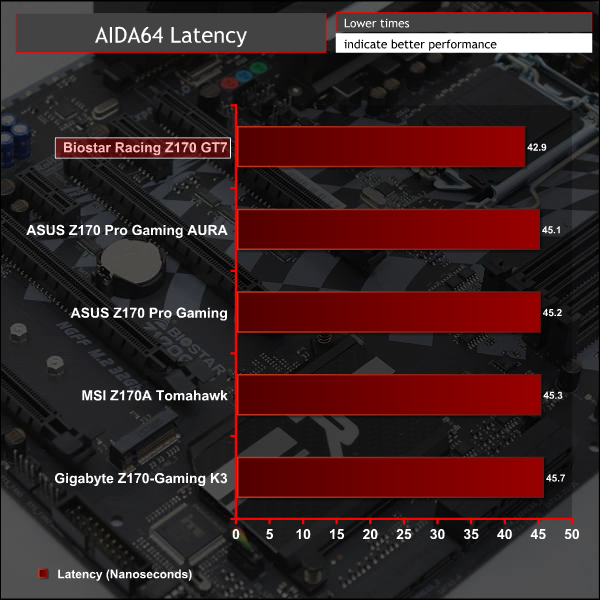
SiSoft Sandra
SiSoft Sandra 2016 is a multi-function utility program that supports remote analysis, benchmarking and diagnostic features for PCs, servers, mobile devices and networks. We use the SiSoft Sandra memory bandwidth test to give us an extra set of memory bandwidth results.
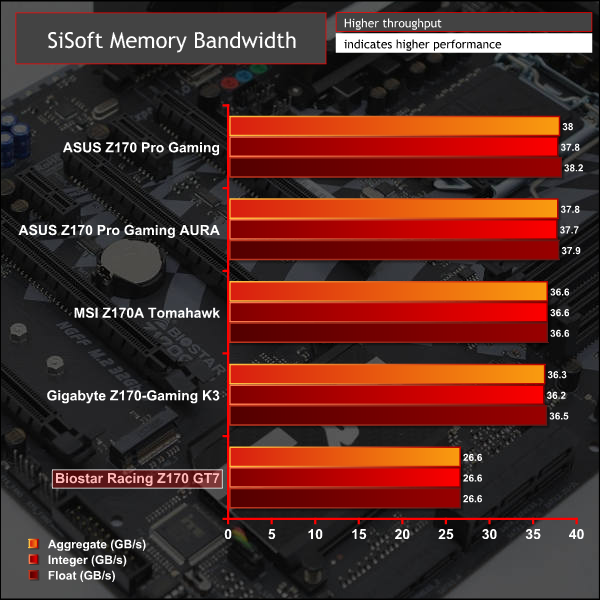
Synthetic memory performance was significantly lower than rival vendors across all bandwidth tests. We adjusted a number of UEFI settings to try and account for why this occurred but we were not able to get to the bottom of it. It seems write and copy are the most affected hence why real-world performance is indistinguishable from rival motherboards; most memory operations tend to be read.
3DMark
3DMark is a multi-platform hardware benchmark designed to test varying resolutions and detail levels of 3D gaming performance. We run the Windows platform test and in particular the Firestrike benchmark, which is indicative of high-end 1080p PC Gaming.
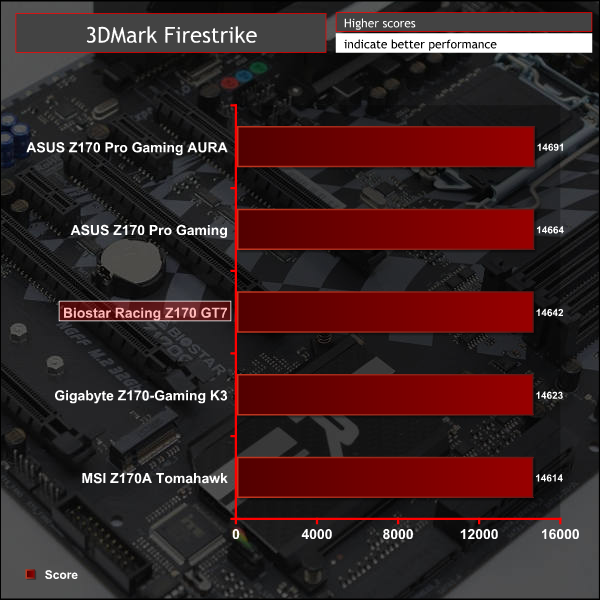
Ashes of the Singularity
Ashes of the Singularity is a Sci-Fi real-time strategy game built for the PC platform. The game includes a built-in benchmark tool and was one of the first available DirectX 12 benchmarks. We run our tests using DirectX 11, a 1080p resolution and the Crazy preset.
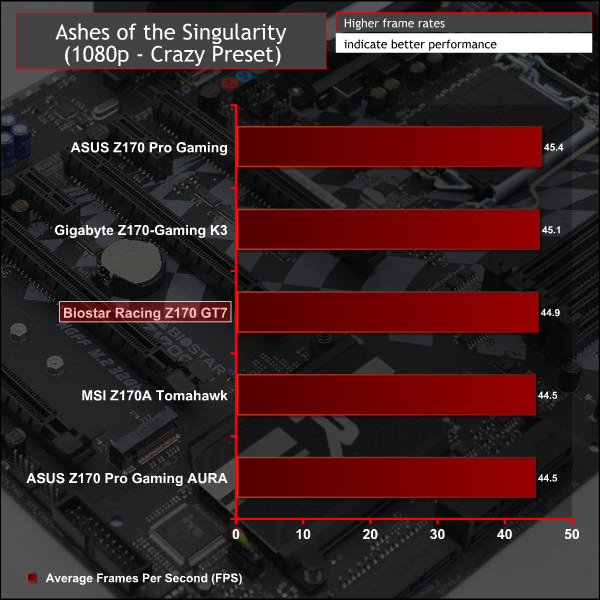
Unigine Valley
Unigine Valley is a GPU stress testing and benchmarking tool that succeeds its predecessor, Unigine Heaven. Valley makes use of dynamic lighting, depth of field, ambient occlusion and dynamic weather patterns. We utililise the built-in benchmarking tool with the Extreme HD preset.
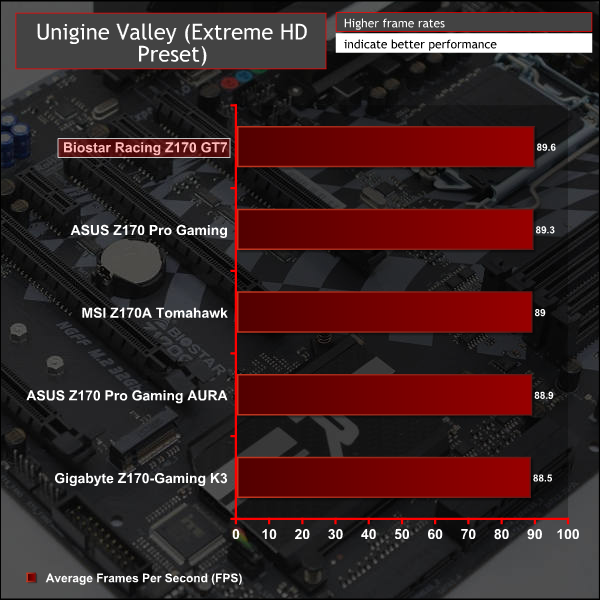
GPU performance was consistent with other Z170 motherboards we've tested.
ATTO Disk Benchmark
The ATTO disk benchmark is a Windows-based utility for testing storage performance of any storage drive or controller. We use the default benchmark setup and run this on an OCZ Trion 150 SSD directly connected to the SATA ports and then again over a USB 3.0 port using a USB 3.0 to SATA III adapter.
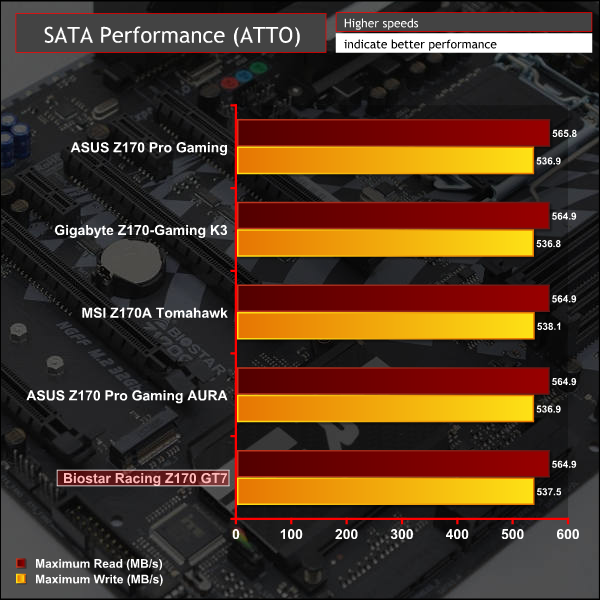
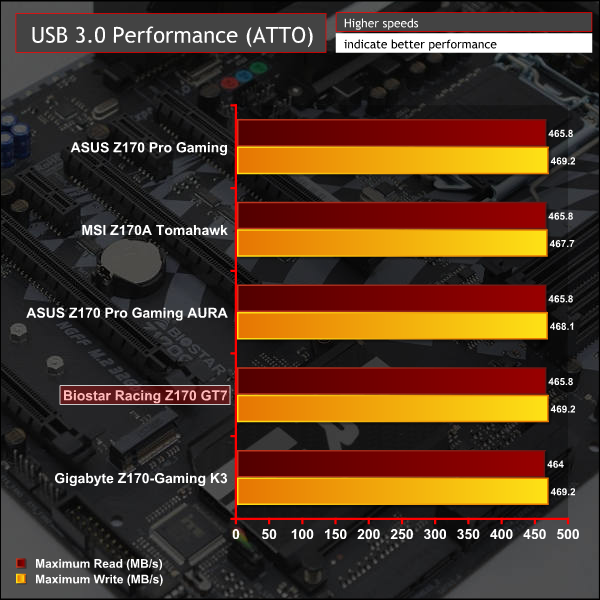
Chipset SATA and USB performance was also as-expected.
Rightmark Audio Analyser
Rightmark Audio Analyser is a freeware benchmarking utility designed to objectively test the performance characteristics of audio solutions. We setup a line-in line-out loop and execute the record/playback test before generating the results report you see below. This test was run at 24bit audio depth and 192KHz frequency.
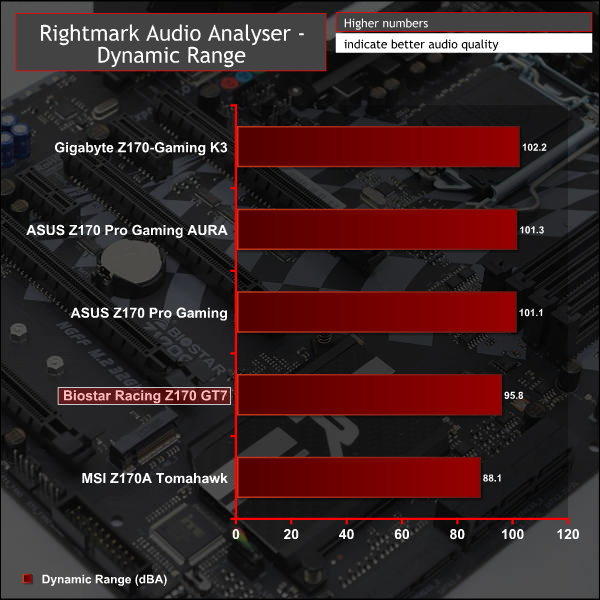
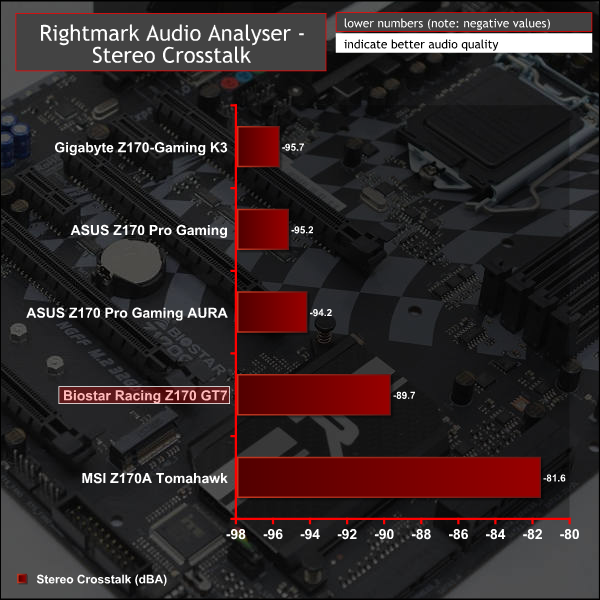
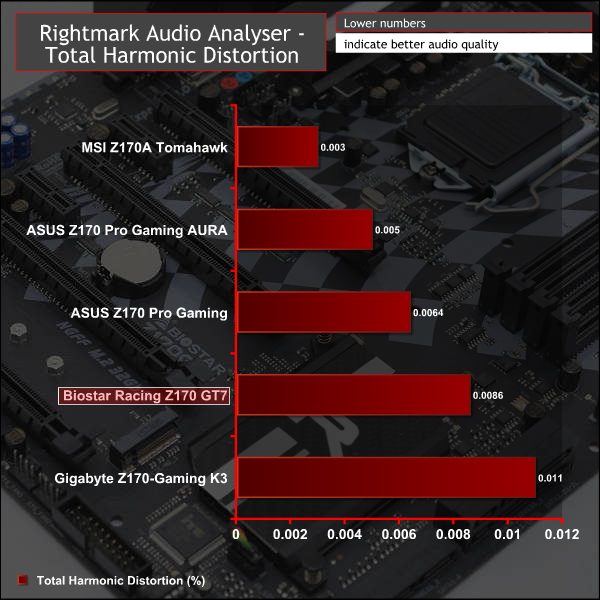
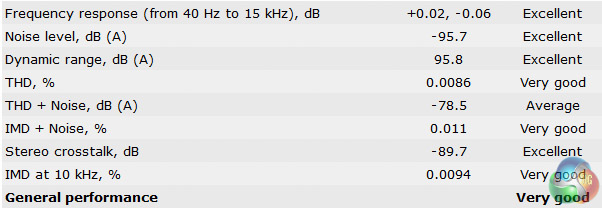
Biostar's Racing Z170 GT7 uses ALC898 which is slightly better than ALC892 (MSI Z170A Tomahawk) but slightly worse than ALC1150 (all other motherboards on test) which fully explains the benchmark results we observed. The audio performance is very good, and helped by the amplifiers, though we think the price point should have entailed the use of the ALC1150 codec.
Power Consumption
We leave the system to idle on the Windows 10 desktop for 5 minutes before taking a reading, for CPU load results we run Cinebench and take a reading in the middle of the render progress.
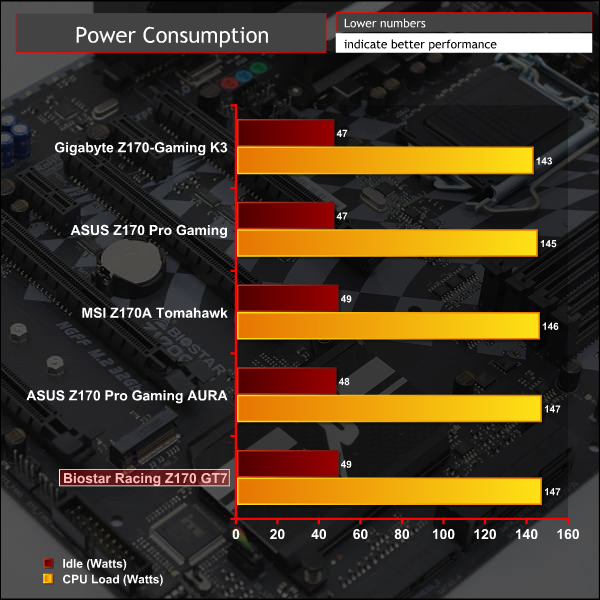
Power consumption is par for the course.
Overclocking
Biostar's Z170 GT7 managed the OC limit of our CPU sample, 4.7GHz, and with the same vCore we typically use; 1.375.
The vCore readout seemed to suggest Biostar's voltage overshot by an alarming rate of anything between 0.025 to 0.1. For example we saw 1.375 reading out as high as 1.48v, setting a voltage of 1.2 or 1.25 still saw overshoot of similar magnitude, to 1.3 and beyond.
However, we cannot validate this since the board lacks physical voltage readout points. This situation isn't helped by the fact the Load Line Calibration (LLC) isn't adjustable from within the UEFI or operating system.
We also continued to experience issues with power-based throttling that we couldn't get around with any permutation of Power Limit 1, Power Limit 2 or RSR (Reliability Stress Restrictor) settings.
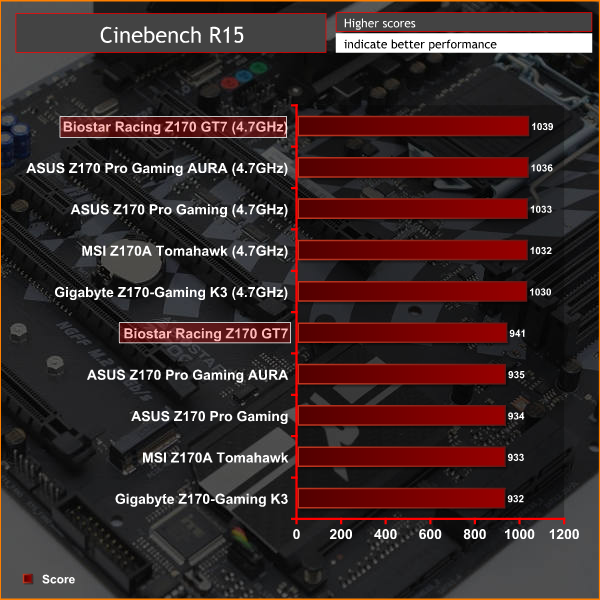
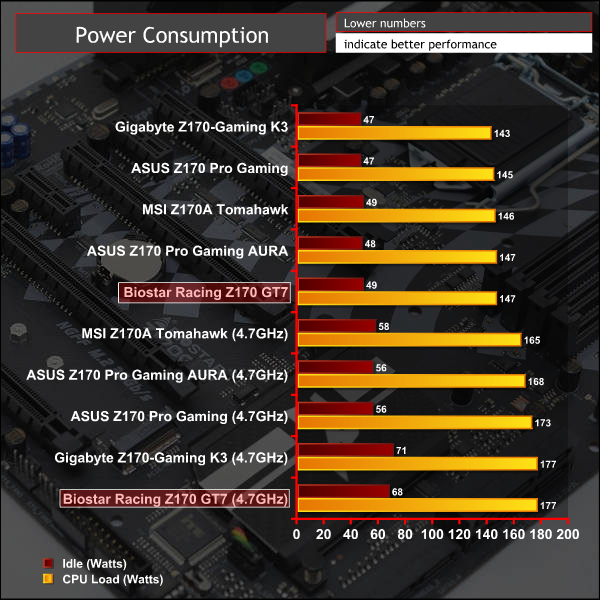
The gaming motherboard market for Z170 is more competitive than it has ever been since all motherboard models have now been released. Motherboard vendors will not be releasing any more models in preparation for the release of new Z270 motherboards alongside associated Kaby Lake CPUs. As such now is probably the best time to buy Z170 and any prospective buyer is surely aware of this fact.
Biostar's Racing Z170 GT7, then, faces a high level of competition and needs to offer something special to standout from its competitors. On paper specification alone the Biostar motherboard seems to have most of the bases covered and the RGB LEDs built into the motherboard heatsink give it a unique and eye-catching twist. It's a great idea worth commending and many will see this motherboard as worth purchasing for that design feature alone.
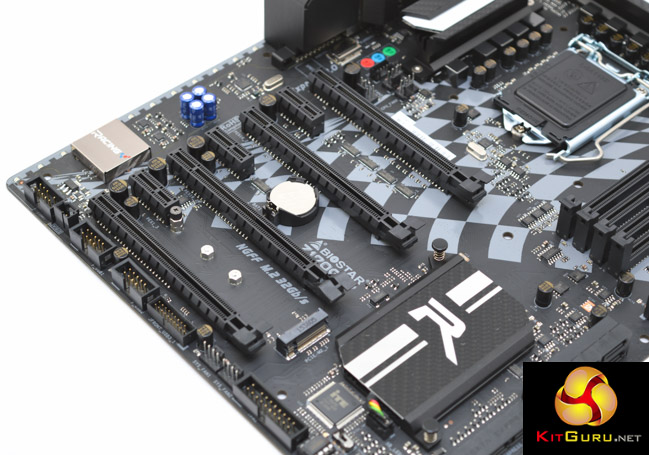
However, there are many more factors to take into consideration when it comes to deciding on a Z170 motherboard, the price is one of those key factors. The current real-world retail price of £150 ($165) for the Biostar motherboard goes up against motherboards of a strong calibre – the ASRock Z170 Fatal1ty Gaming K6, ASUS Z170 Pro Gaming AURA, MSI Z170A Gaming M5 and Gigabyte Z170X-Ultra Gaming.
Based on our testing we don't feel like the Biostar Racing Z170 GT7 does enough to prove itself worthier than the strong competition. The RGB feature set may catch your eye but our experiences with the UEFI, which included compatibility problems, strange power throttling and no LLC, leave something to be desired. So too does the sub-par memory performance and the fact Biostar opted for the ALC898 audio codec rather than the stronger ALC1150 used by much of the competition.
Pros:
- Extensive RGB LED customisation options
- Neutral styling
- Onboard touch buttons and dual-BIOS
Cons:
- Flaky BIOS compatibility and performance
- Sub-par memory performance
KitGuru says: A motherboard with a unique RGB-twist, the Biostar Racing Z170 GT7 is a reasonable attempt at a mid-range gaming motherboard.
Be sure to check out our sponsors store EKWB here
 KitGuru KitGuru.net – Tech News | Hardware News | Hardware Reviews | IOS | Mobile | Gaming | Graphics Cards
KitGuru KitGuru.net – Tech News | Hardware News | Hardware Reviews | IOS | Mobile | Gaming | Graphics Cards


